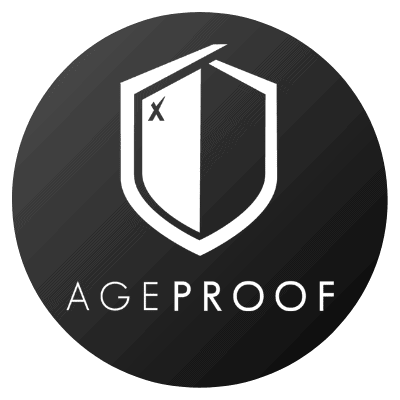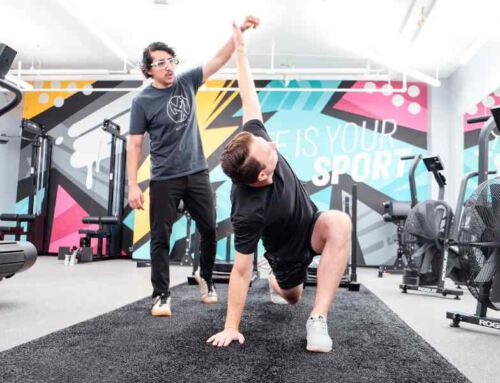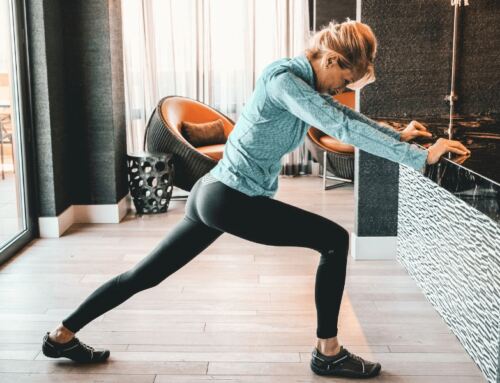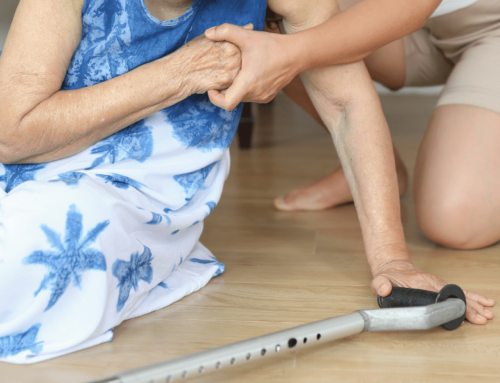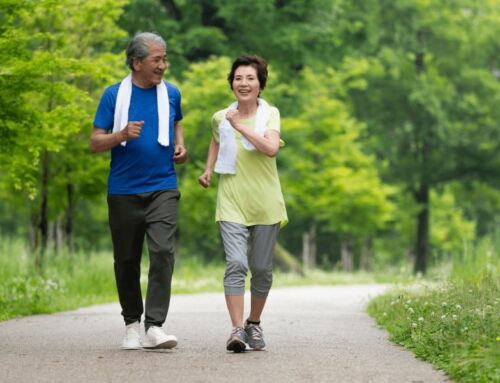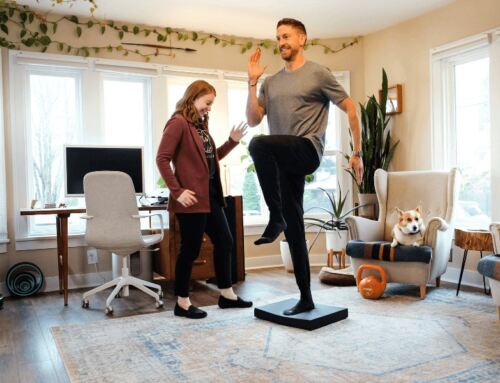The Best 4-Part Workout Plan for Active Adults Over 60
“If exercise could be packaged in a pill, it would be the single most widely prescribed and beneficial medicine in the nation.”
-Robert Butler, National Institute on Aging
Exercise is medicine. And like any other medical treatment, exercise should be prescribed in an individualized and controlled manner.
But with seemingly infinite ways to exercise and many myths around how active adults over 60 should exercise, it can be challenging to identify the absolutely essential components that all fitness routines should include in order to exercise effectively.
The goal for this article is not to recommend a specific workout routine for every person 60 and older. Not only would this be impractical and ineffective, but importantly, this is a job for your individual physical therapist, personal trainer, or physician.
Instead, this article will summarize key findings from recently published expert guidelines for physical activity in the older adult population. Readers can use this information alongside recommendations from their healthcare provider in order to create an individualized, goal-oriented, and evidence-based exercise program.
What do the experts say about exercise for older adults?
In 2021, international experts published consensus guidelines for exercise in the older adult population.
This 30-page document begins with authors describing the aging process as “universal, ubiquitous, inevitable, and decremental”, where “every physiological function is being continuously diminished.”
After delivering that honest truth about aging, the authors are quick to identify exercise’s essential role in affecting the aging trajectory and reducing the risk of diseases such as cardiovascular disease, stroke, obesity, dementia, etc.
According to their detailed review of the scientific literature, exercise programs should be…
- Intentional—based on desired outcome
- Individualized—tailored to the individual
- Multi-modal—including multiple types of physical activity
Most importantly, they recommended four distinct types of training that all active adults over 60 should implement into their exercise routines or workout plans in order to maximize the benefits of this “beneficial medicine.”
- Aerobic Training
Aerobic training consists of sustained activity that challenges the ability of your lungs and heart to deliver oxygen-rich blood to the rest of the body and to manage the buildup of waste products. Aerobic exercise leads to specific adaptations that improve endurance and reduce fatigue and breathlessness during activity.
Recommended parameters for aerobic training include:
Frequency:
- 3-7 days per week
- 2-3 days per week
- 1-7 days per week
Volume:
- Working up to 20-60 minutes
- Consider high intensity interval training (HIIT) with more intense bouts of 1-4 minutes
- 1-3 sets of 8-12 repetitions, covering 8-10 major muscle groups
- 1-2 sets of 4-10 different exercises
Intensity:
- Working up to moderate to vigorous intensity
- Using heart rate as a guide
- 55-70% heart rate reserve, or 60-80% max heart rate
- Using Rating of Perceived Exertion (RPE) as a guide
- Work up to 4-7/10 RPE
- Practice the most challenging position or movement without falling in a safe environment
- Progress as able when the balance exercise no longer feels challenging
Examples of aerobic training include walking, jogging or running, stair climbing, cycling, swimming, dancing, high-intensity interval training (HIIT), or other sustained exercise activities.
2.) Strength and Resistance Training
Strength or resistance training is used to improve the capacity of muscles to produce force. Power training is a similar type of muscle training which emphasizes muscle contraction velocity and force production over time.
Both strength and power training involve specific, progressive overload and contrary to many exercise myths, have been found to be safe, functional, and feasible for older individuals who are frail or have other comorbidities.
Intensity can be measured with % 1 rep maximum (RM). 1RM refers to the maximum amount of weight that an individual can lift for a single repetition of an exercise with good form.
Rest is typically recommended between sets and between sessions to allow muscles adequate time to recover.
Frequency: 2-3 days per week
Volume: 1-3 sets of 8-12 repetitions, covering 8-10 major muscle groups
Intensity:
- Moderate to high intensity
- Starting at 30-40% 1RM, progressing to 70-80% 1RM
Examples of strength and resistance training include bodyweight exercises with or without additional resistance using free weights (dumbbells, kettlebells, or heavy household objects), machines, resistance bands, etc.
3.) Balance Training
Balance training involves the practice of maintaining one’s center of mass above their base of support in a variety of conditions. Balance is often a prerequisite for other types of training mentioned above, and it is especially important in individuals at high risk of falls.
To reduce risk of fall-related injury, it is important to perform balance training in a safe environment (at the kitchen countertop, in the corner of a room, or in a doorway) and with specific guidance and/or supervision from a qualified health provider.
Frequency: 1-7 days per week
Volume: 1-2 sets of 4-10 different exercises
Intensity:
- Practice the most challenging position or movement without falling in a safe environment
- Progress as able when the balance exercise no longer feels challenging
Examples of balance training include Tai Chi, yoga, tandem walking, stepping over objects, turning, unstable surface balancing or walking, dual-tasking, balancing with eyes closed, etc.
4.) Flexibility Training
Flexibility training involves exercises targeting mobility of joints or extensibility of soft tissue. There is limited scientific evidence, however, that improvements in flexibility are associated with any important clinical outcomes.
The guidelines indicate that “flexibility exercise is best conceptualized as a component of cool-down routines after the actual exercise session has been completed.”
While flexibility training can be a useful component of individual programs, there are no specific parameters (as are listed above for other training types) guiding use across larger populations of older adults.
Conclusion
Every living person is aging. Physical activity and other lifestyle factors allow individuals to affect their individual aging process through the health-promoting and disease-reversing effects of exercise.
To stay active long-term and reduce the risk of chronic disease, people over 60 should create and maintain an individualized, goal-oriented, and evidence-based exercise program including strength, aerobic training, and balance training, in conjunction with specific recommendations from their healthcare provider.
To schedule a consultation or session with a physical therapist, click here.
To join our specialized online exercise community for adults over 60, click here.
References:
- Izquierdo, M., Merchant, R.A., Morley, J.E. et al. International Exercise Recommendations in Older Adults (ICFSR): Expert Consensus Guidelines. J Nutr Health Aging 25, 824–853 (2021). https://doi.org/10.1007/s12603-021-1665-8
- https://link.springer.com/article/10.1007/s12603-021-1665-8
- Jimeno-Almazán A, Pallarés JG, Buendía-Romero Á, et al. Post-COVID-19 Syndrome and the Potential Benefits of Exercise. Int J Environ Res Public Health. 2021;18(10):5329. Published 2021 May 17. doi:10.3390/ijerph18105329
- https://www.ncbi.nlm.nih.gov/pmc/articles/PMC8156194/
- https://www.cdc.gov/nchs/fastats/exercise.htm
- Maciejewski ML, Hammill BG. Measuring the burden of multimorbidity among Medicare beneficiaries via condition counts and cumulative duration. Health Serv Res. 2019 Apr;54(2):484-491. doi: 10.1111/1475-6773.13124. Epub 2019 Feb 20. PMID: 30790281; PMCID: PMC6407342.
- https://pubmed.ncbi.nlm.nih.gov/30790281/
About AgeProof Your Body
AgeProof Your Body is a specialized online exercise community for anyone 60+ who wants to stay healthy, active, and strong from the safety of home. Designed and lead by the trusted physical therapists at MovementX, this virtual community exists to help you gain strength, improve balance and flexibility, and ensure you can move your best and live your best—regardless of age.


